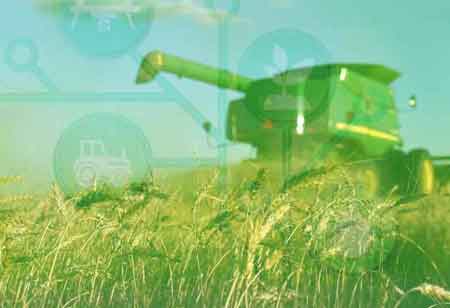Thank you for Subscribing to Agri Business Review Weekly Brief
A Guide to Transforming Farms with Data Analytics
Powered by data analytics and modern technology, precision farming is revolutionizing traditional agriculture for a more sustainable and efficient future.

By
Agri Business Review | Friday, February 14, 2025
Stay ahead of the industry with exclusive feature stories on the top companies, expert insights and the latest news delivered straight to your inbox. Subscribe today.
Powered by data analytics and modern technology, precision farming is revolutionizing traditional agriculture for a more sustainable and efficient future.
Fremont, CA: Precision agriculture represents a significant shift in the agricultural industry, driven by rapid technological advancements. This innovative approach, which integrates detailed data analysis and artificial intelligence (AI), is set to redefine traditional farming methods. Not only does precision agriculture modernize agricultural practices, but it also underscores the industry's commitment to greater sustainability and efficiency, ensuring a more productive and environmentally conscious future for farming.
What Makes Precision Agriculture What It Is
Precision agriculture is a comprehensive approach that utilizes state-of-the-art technologies to optimize every facet of crop yielding. This cutting-edge farming strategy uses data analytics and artificial intelligence to improve crop yields while conserving resources and reducing environmental impact. Giving farmers accurate, up-to-date information about crop health, weather patterns, and soil conditions is essential to its ideology since it allows them to make well-informed decisions.
AI and Data Revolutionizing Agriculture
AI, GPS, and data-driven insights are some of the technologies that combine in precision agriculture to promote more productive agricultural methods. Real-time information on crop vitality, soil conditions, and climate gives farmers the precision they need to make decisions, which boosts output, reduces costs, and prepares agriculture for the future.
Handling Agriculture with Cutting-Edge Apps
Precision agriculture uses cutting-edge technology to improve farming practices. These include data analytics, remote sensing, GPS/GNSS tracking, and variable rate technology (VRT), all intended to improve yield, encourage sustainable practices, and optimize resource management.
Technology with Variable Rates (VRT)
By using variable rate technology (VRT), farmers can optimize yields while reducing expenses and lowering their impact on the environment by adjusting the application rates of inputs like seeds, fertilizers, and pesticides based on soil variability.
Satellites and drones are examples of remote sensing technologies (RST)that provide vital information on crop health, moisture content, and nutrient status. This information helps farmers make well-informed decisions for efficient crop management.
Precision Irrigation Systems (PIS): Cutting-edge technologies such as variable-rate irrigation (VRT) improve water efficiency by regulating the flow of water in response to weather and soil moisture levels, maximizing agricultural production and water use.
Data Analytics’ Revolutionary Potential in Agriculture
Data analytics becomes the key that unlocks agriculture’s potential and gives it a competitive advantage. Farmers, academics, and agricultural enterprises can make more informed decisions by combining cutting-edge technology and extensive data, embodying “precision agriculture” or “smart farming.”
Today’s farmers enjoy the luxury of accuracy; rather than depending on educated guesses, they can make decisions about their crops and livestock based on data-driven insights. Various sensors, satellites, and Internet of Things (IoT) devices enable this breakthrough by gathering vast amounts of data on various farming-related topics. The ability of contemporary instruments to analyze data allows for forecasting crop yield, possible disease outbreaks, and market trends, which leads to improved farm management.





